Overview
Healthcare facilities require essential amenities, including:
- Same-day access
- Tailored services
- Technology integration
to effectively attract patients. These amenities significantly enhance patient satisfaction and trust, while also improving operational efficiency and revenue generation. Their critical role in the competitive healthcare landscape cannot be overstated. By prioritizing these features, healthcare providers can position themselves advantageously in a market that demands responsiveness and quality service.
Introduction
The healthcare landscape is rapidly evolving, with facilities competing not only for patients but also for their loyalty and satisfaction. As consumer expectations shift, understanding the essential amenities that attract individuals to healthcare facilities has become paramount. This article delves into the crucial elements that enhance patient experiences—from same-day access to personalized services—and raises the question: how can healthcare providers effectively adapt their offerings to meet the diverse needs of their clientele in this competitive environment?
Zero Flux: Daily Insights on Healthcare Facility Trends
Zero Flux delivers essential daily insights for medical centers striving to attract and retain individuals. By curating data from over 100 sources, this newsletter illuminates emerging trends in consumer preferences, facility design, and service offerings. Such information is vital for medical administrators who seek to adapt their strategies in response to evolving client expectations, ultimately enhancing overall satisfaction.
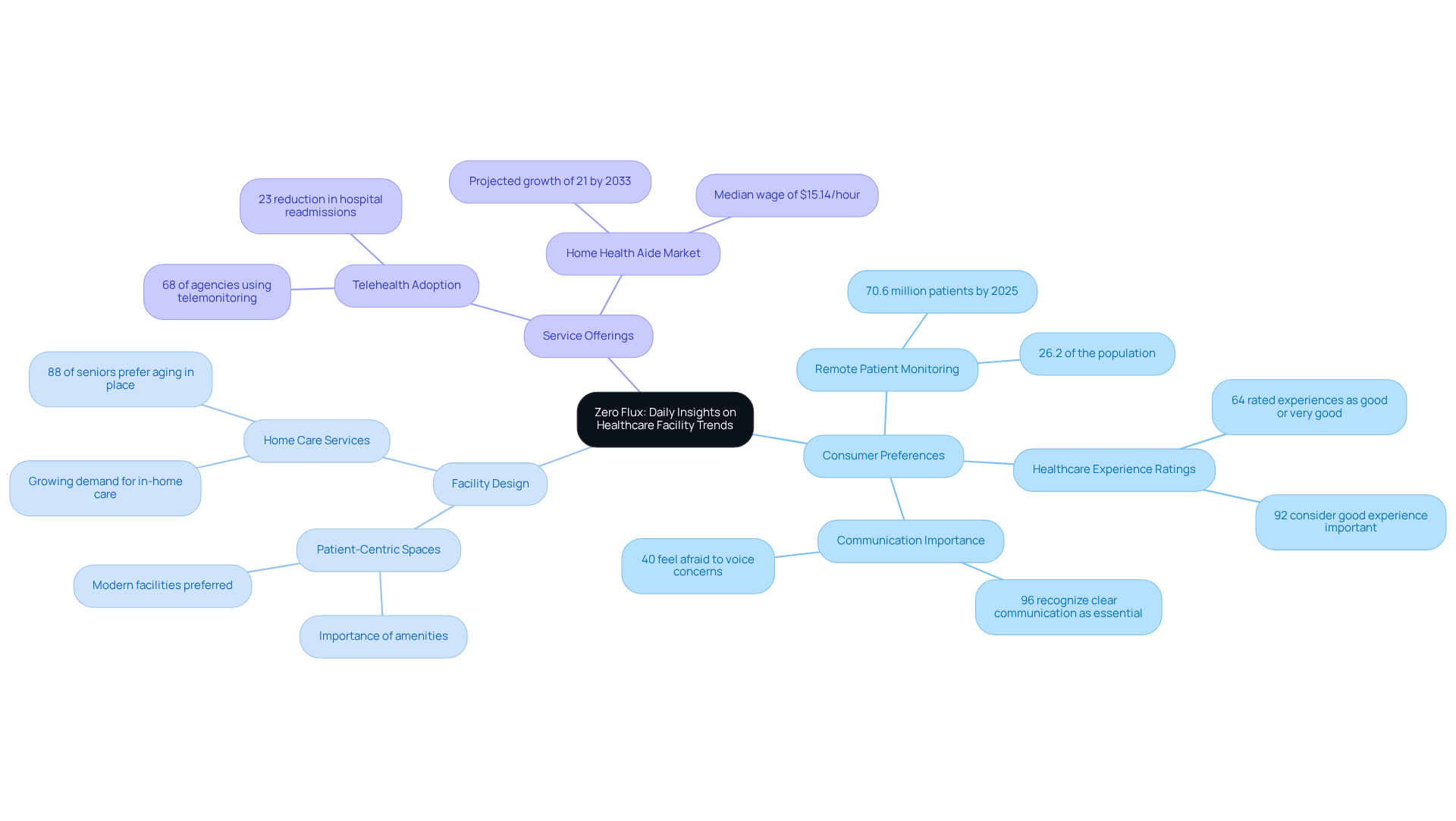
Same-Day Access: A Key Patient Attraction Strategy
Implementing same-day access to healthcare services stands as a crucial strategy for attracting individuals. Facilities embracing this method can significantly reduce wait times and enhance patient flow, resulting in higher satisfaction rates.
For instance, urgent care facilities that offer prompt consultations have experienced a notable increase in visitor numbers, effectively addressing the urgent needs of individuals seeking timely medical assistance. Research indicates that the availability of same-day appointments correlates with improved satisfaction, with studies showing that individuals are more likely to express contentment when they can consult their provider on the same day they seek help.
This trend is particularly relevant, given that urgent medical visits surged by 119% from 2008 to 2015, reflecting a growing preference for quick access to healthcare services. Additionally, urgent care facilities have witnessed a 60% increase in visitor volume since 2019, underscoring the success of same-day access programs.
The urgent care sector is projected to generate approximately $48 billion in revenue in 2023, highlighting the financial growth potential of these establishments. Furthermore, Jason Richter notes that a higher percentage of same-day appointments is associated with increased satisfaction among individuals regarding timely access to services.
Reducing wait times not only enhances the experience for individuals receiving care but also improves operational efficiency, enabling facilities to manage larger volumes of clients effectively. As the healthcare landscape evolves, urgent care facilities are increasingly recognized for their ability to meet the demand for prompt medical services, positioning amenities healthcare such as same-day access as a vital component of their operational strategy.
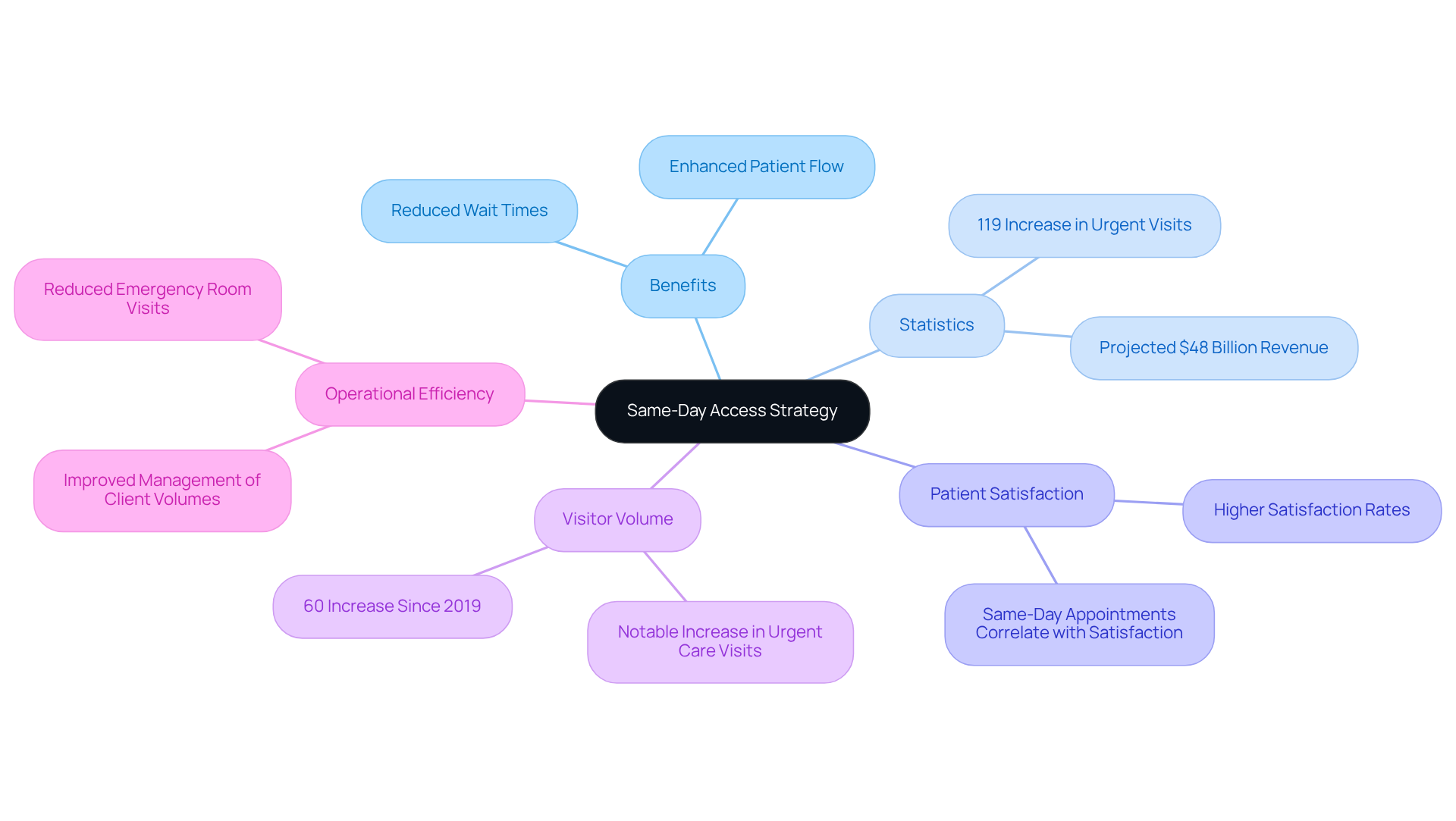
Tailored Services: Customizing Amenities for Patient Needs
Healthcare centers that provide customized services significantly enhance client satisfaction. By tailoring amenities healthcare such as dietary choices, language assistance, and specialized care programs, these facilities effectively cater to the distinct requirements of their resident groups. For example, hospitals that offer culturally appropriate meals and employ multilingual personnel foster a more inclusive atmosphere, making individuals feel valued and understood. This approach is vital; research indicates that:
- 92% of individuals express that having a positive experience with healthcare is extremely or very significant to them.
- 64% prioritize a favorable experience.
This highlights the necessity of being treated with respect and understanding.
Moreover, the incorporation of amenities healthcare not only improves the overall experience for individuals but also boosts confidence in medical systems. Trust in these systems has experienced a decline, with:
- 68% of people indicating that their trust has diminished over the last two years.
- 40% of adults identified financial concerns as the main reason for avoiding or delaying medical care in the past two years, emphasizing the economic strains individuals encounter.
As the medical field continues to evolve, the emphasis on customized services will be crucial for attracting and retaining individuals, ultimately resulting in enhanced satisfaction and loyalty.
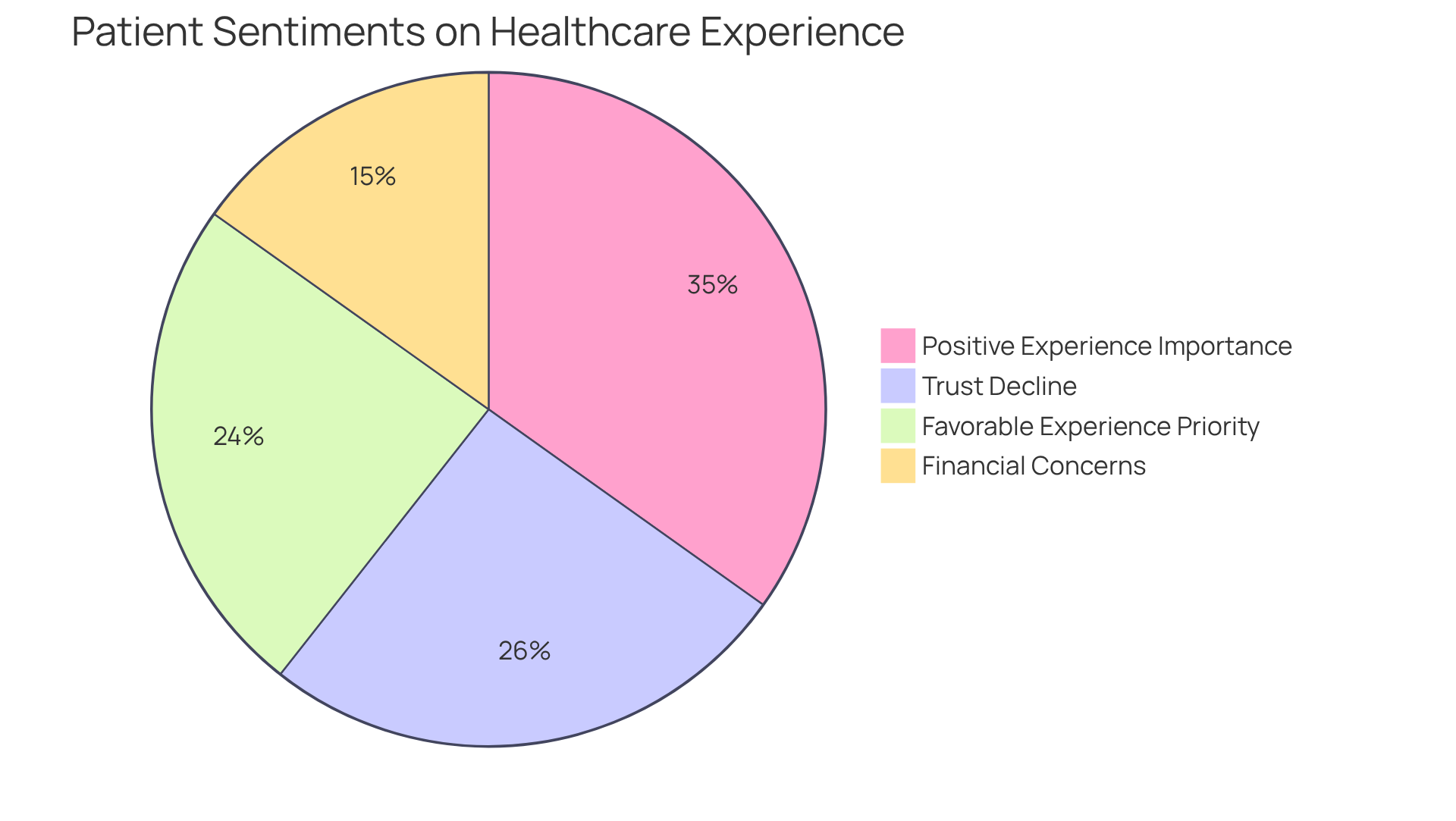
Brand Loyalty: Building Trust Through Quality Amenities
Building brand loyalty in healthcare is fundamentally rooted in a steadfast commitment to quality amenities. Facilities that prioritize comfortable waiting areas, pristine environments, and attentive staff create a positive impression that encourages visitors to return. Studies reveal that hospitals investing in guest comfort through amenities such as free Wi-Fi, refreshments, and entertainment options often achieve significantly higher satisfaction scores.
For instance, hospitals with well-designed waiting areas report enhanced visitor retention, as comfort directly correlates with the likelihood of repeat visits. Notably, 73% of U.S. adults believe the healthcare system falls short in addressing their needs in at least one area, underscoring the necessity of focusing on comfort for individuals.
Furthermore, individuals are 300% more inclined to recommend a hospital when they have confidence in it, highlighting the critical role of quality amenities in fostering trust and loyalty. A substantial 92% of individuals emphasized the importance of a good experience for those receiving care, reinforcing the notion that quality amenities are not merely luxuries but essential components of effective care.
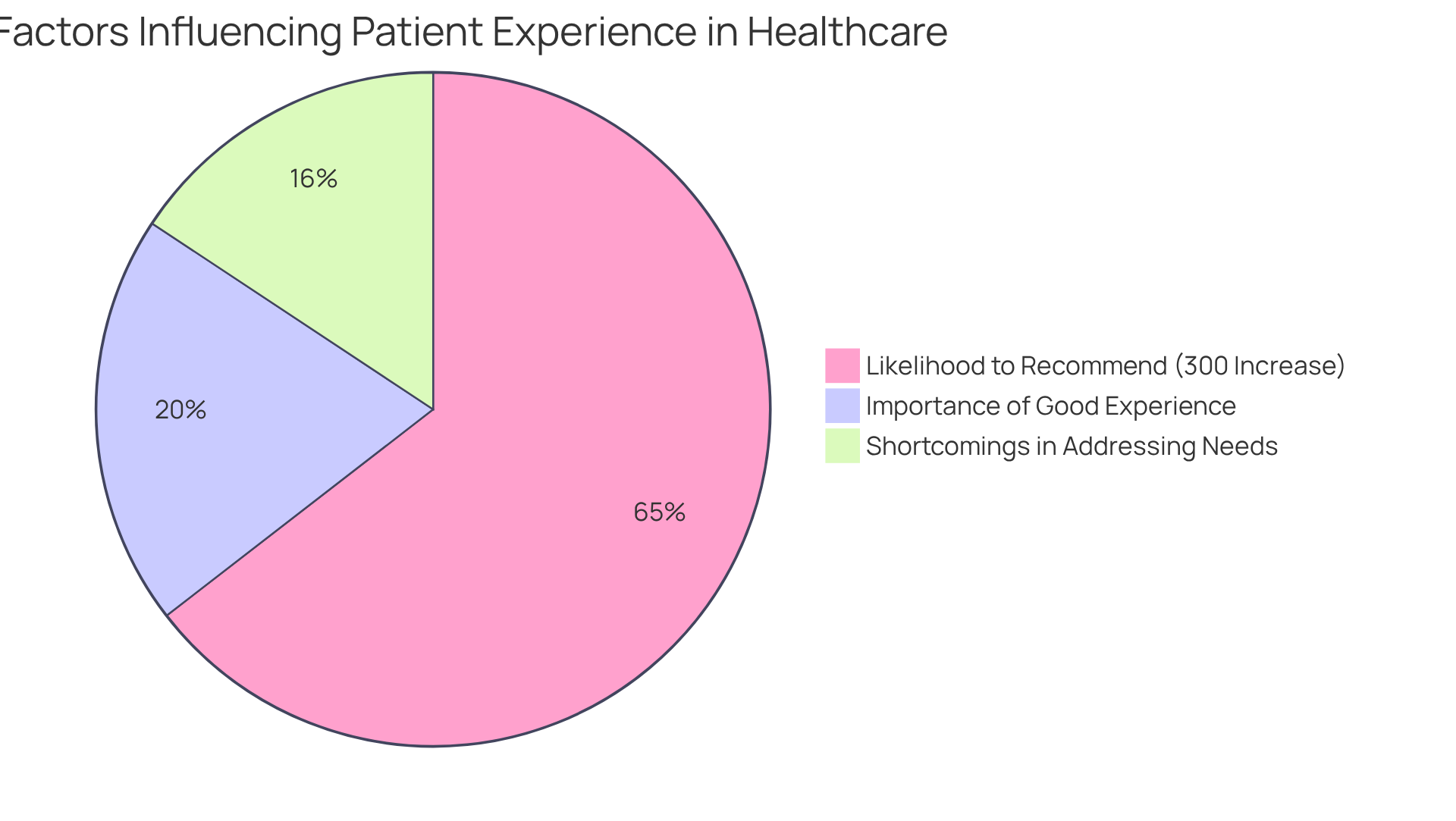
Technology Integration: Enhancing Patient Access and Experience
Incorporating technology into medical centers significantly enhances amenities healthcare and access for individuals. Features such as online appointment scheduling, telehealth services, and health portals enhance the amenities healthcare offers, empowering individuals to manage their healthcare more effectively.
For instance, facilities utilizing electronic health records (EHRs) enable seamless access to medical histories, promoting improved communication and coordination of services. As of 2023, a remarkable 96% of U.S. non-federal acute treatment hospitals have adopted certified EHR technology, underscoring the extensive integration of this technology in elevating patient service.
Furthermore, 80% of individuals in the U.S. have accessed services through telemedicine at least once, demonstrating an increasing reliance on these options. Telehealth consultations have been shown to enhance access to services for minorities and lower socioeconomic groups. A 2023 national survey indicates that these visits significantly improve medical delivery for these populations.
By July 2025, the impact of telehealth services on user experience is expected to be profound, with 116 million individuals indicating a preference for virtual consultations in 2024. This reflects a notable shift in expectations, highlighting the essential role of technology in enhancing access and the overall amenities healthcare experiences.
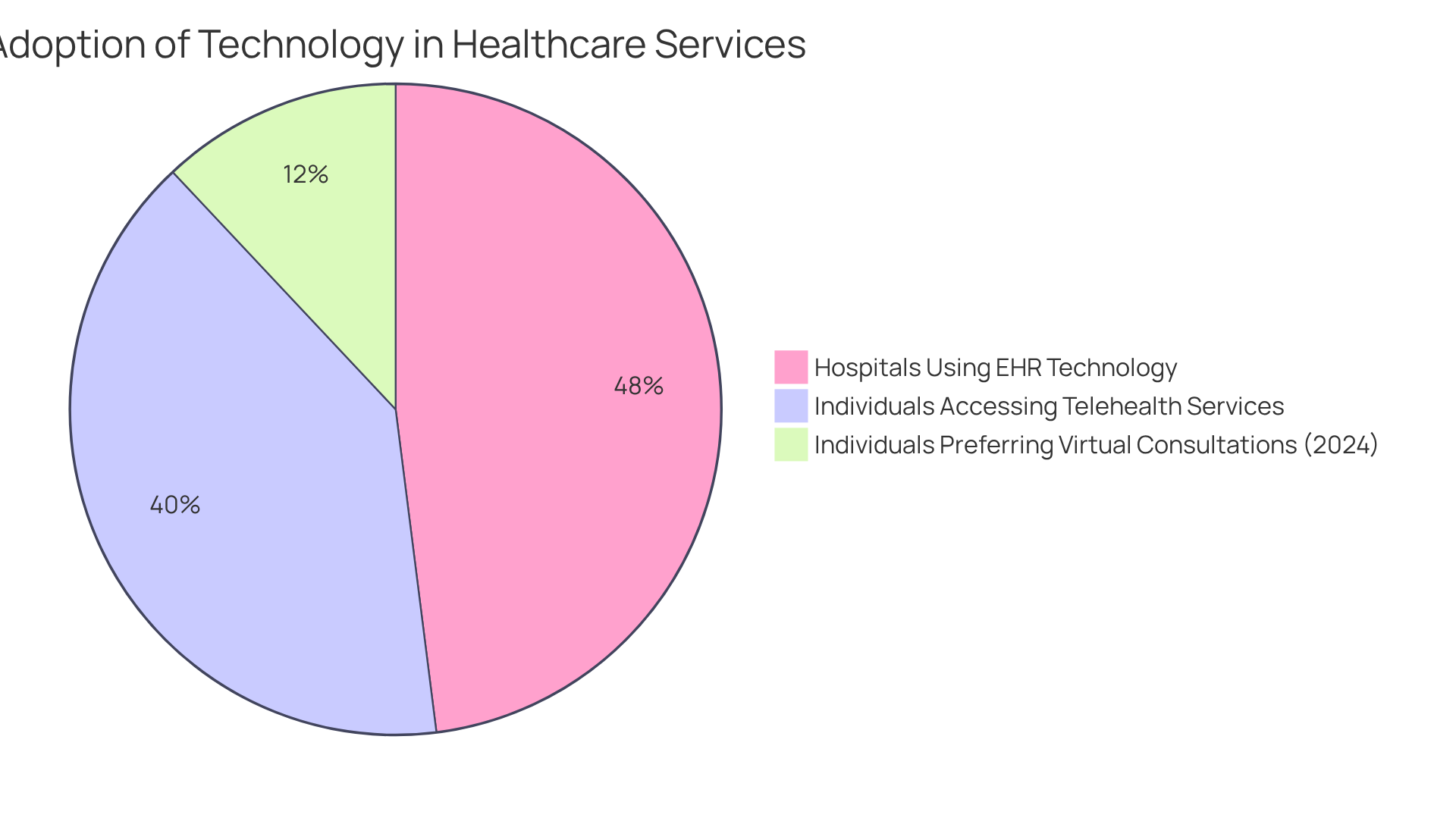
Commercial Patient Amenities: Attracting Business Clients
Healthcare centers can significantly enhance their appeal to business clients by incorporating amenities healthcare tailored to individuals. These include:
- Corporate wellness programs
- On-site health screenings
- Flexible scheduling options
Such amenities healthcare not only address the specific needs of businesses but also foster partnerships that can lead to increased patient referrals and a steady stream of clients. For example, companies prioritizing employee health benefits are more likely to engage with providers offering convenient, customized services for their workforce.
Indeed, wellness initiatives have proven their capacity to boost employee productivity and satisfaction, making amenities healthcare a vital consideration for companies when selecting medical service providers. Notably, 91% of businesses plan to invest more in mental health solutions, underscoring the rising significance of wellness initiatives. Furthermore, these initiatives can lead to a remarkable 43% reduction in employee stress and provide a 47% return on investment for each dollar spent, illustrating the financial advantages for medical institutions.
Additionally, 72% of firms that have implemented wellness programs reported lower medical expenses, further emphasizing the value of these amenities healthcare. By aligning their services with the wellness goals of local businesses, medical organizations can establish themselves as preferred partners in promoting employee health and well-being, while simultaneously serving as revenue generators.
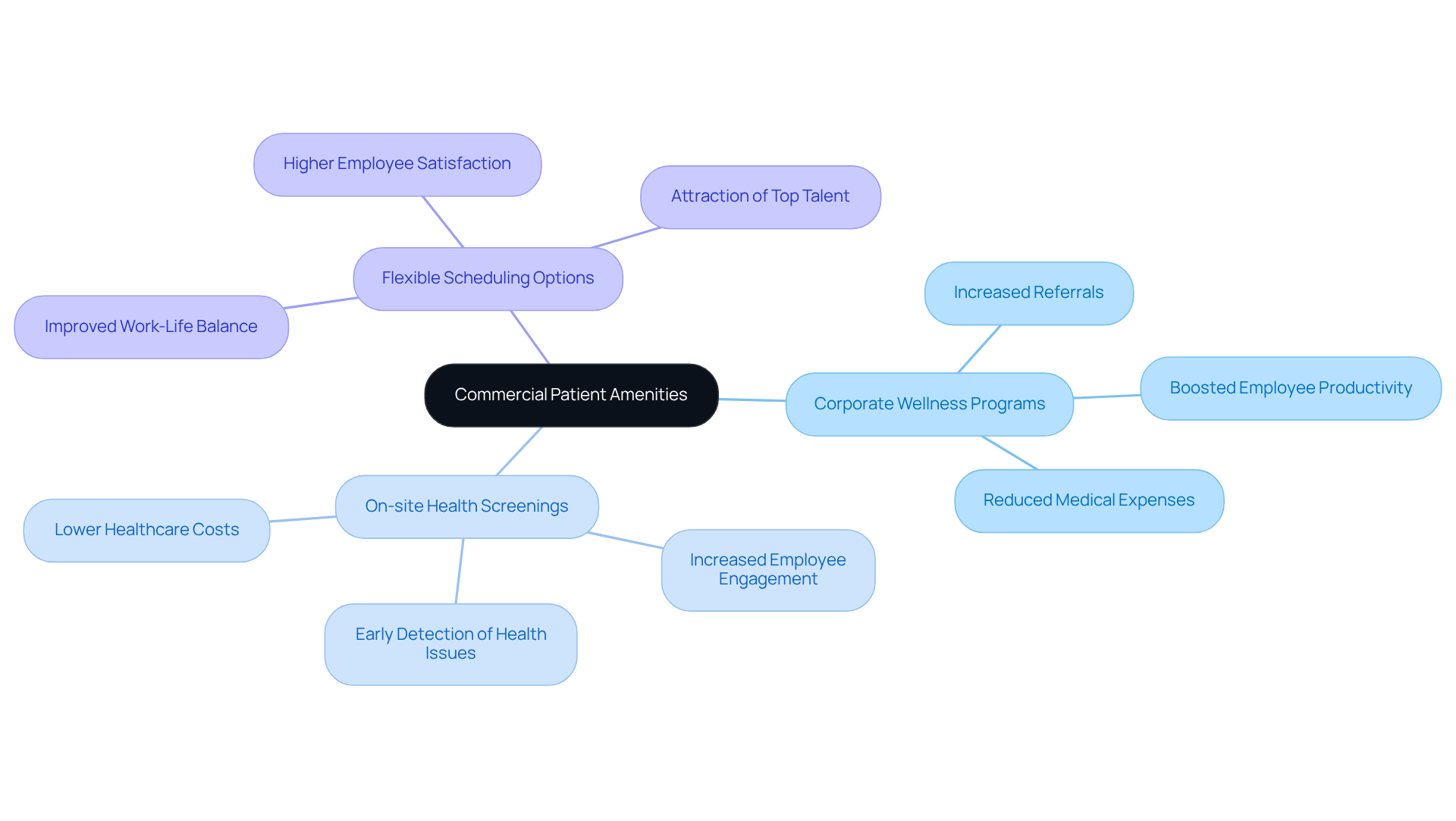
Revenue Generation: Innovative Amenities for Financial Growth
Innovative amenities healthcare are pivotal in enhancing revenue for healthcare institutions. By integrating services such as wellness programs, fitness classes, and health education workshops, these facilities can attract new clients and create diverse income streams. For instance, hospitals that establish wellness centers not only improve care for individuals but also generate revenue through membership fees and program registrations.
Organizations with robust wellness initiatives report a notable increase in patient engagement and satisfaction; 70% of employees in wellness programs indicate heightened job satisfaction. Furthermore, companies with wellness programs experience 28% greater shareholder returns, underscoring the financial incentives for medical institutions to embrace such amenities.
As the medical landscape evolves, incorporating these innovative amenities healthcare features is essential for establishments aiming to thrive economically while promoting comprehensive wellness. Additionally, the burgeoning trend of wellness tourism, projected to surpass a value of over 1.35 trillion U.S. dollars by 2028, highlights the substantial revenue potential for healthcare facilities.
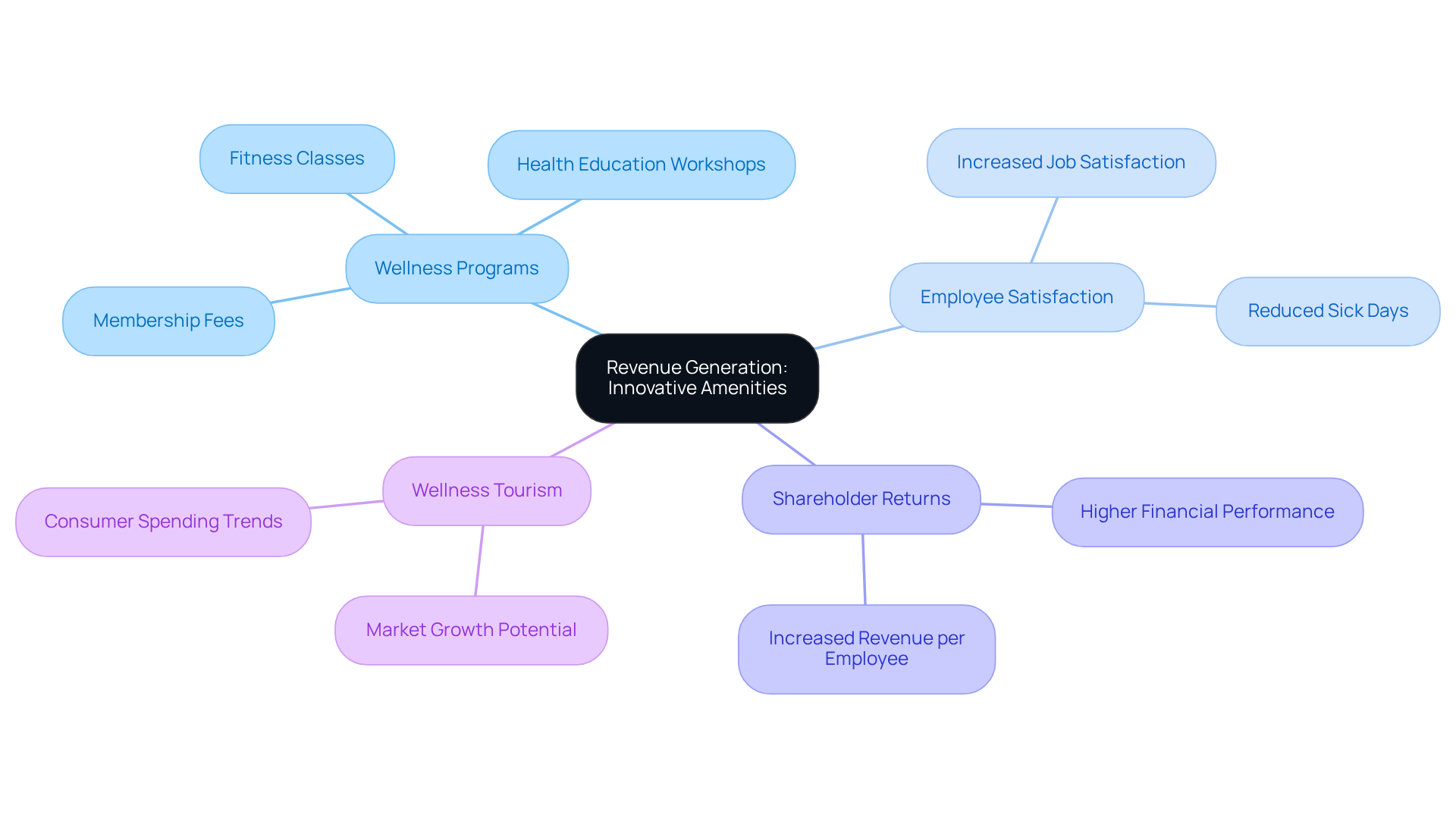
Comprehensive Care: Ensuring Patient Support and Satisfaction
Offering thorough assistance is essential for ensuring client support and satisfaction. Institutions that provide a diverse range of amenities healthcare—from preventive support to rehabilitation—are well-equipped to meet the varied needs of those they serve.
For instance, a healthcare system that integrates amenities healthcare such as primary care, specialty services, and mental health support creates a cohesive experience for individuals. This holistic approach not only leads to improved health outcomes but also significantly enhances satisfaction rates.
Such insights underscore the necessity for organizations to adopt comprehensive service models to foster client contentment.
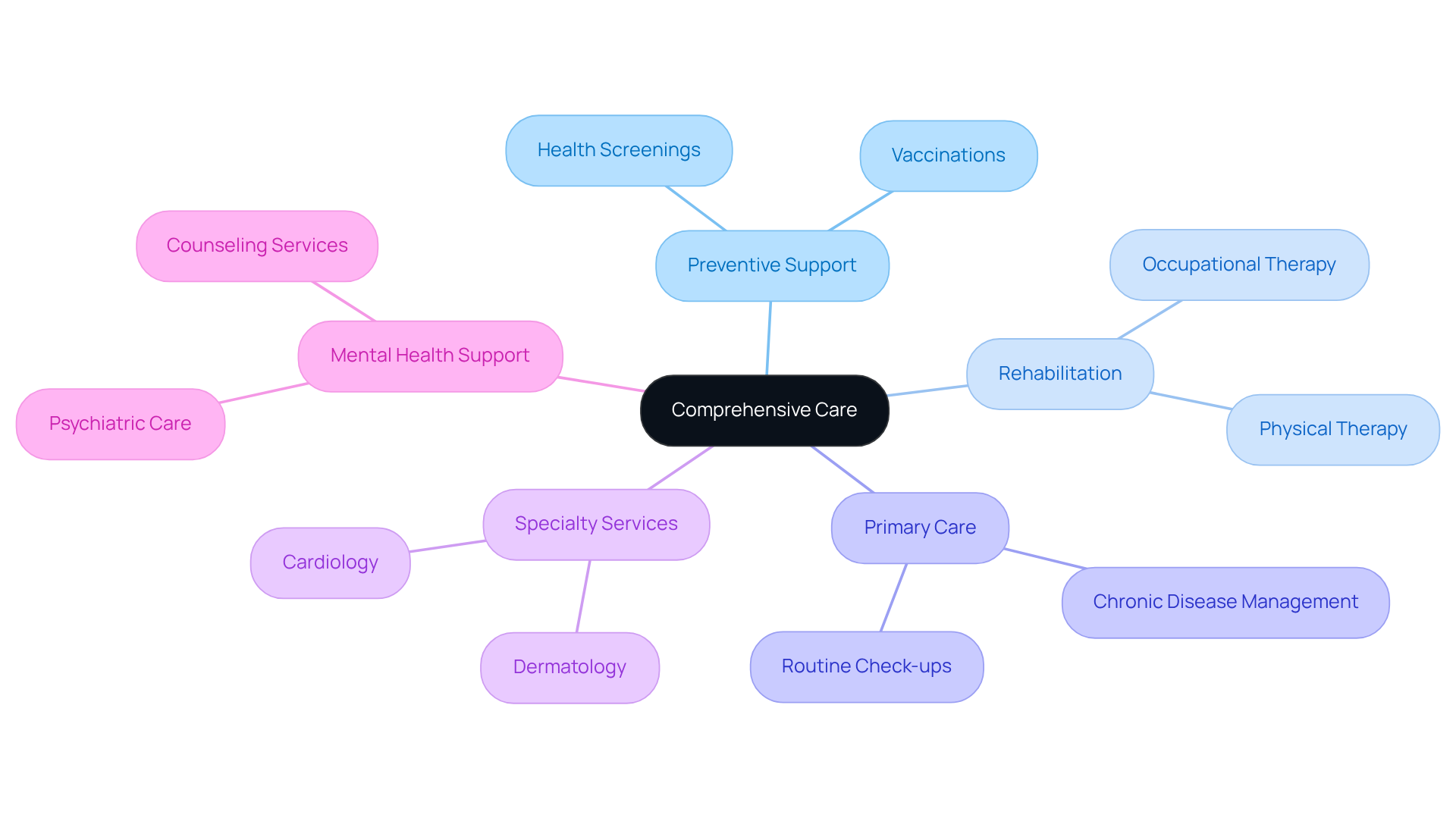
Patient-Centric Design: Recognizing Nuances in Amenities
User-centric design is crucial for enhancing the experience in healthcare environments by prioritizing amenities that promote well-being. Facilities that focus on amenities healthcare such as natural lighting, comfortable seating, and quiet areas are instrumental in creating healing environments that significantly boost satisfaction.
Research shows that hospitals with gardens and relaxation areas report higher satisfaction rates and lower stress levels for patients and their families. Notably, studies indicate that access to natural light can lead to a 20% increase in satisfaction, as it not only elevates mood but also facilitates quicker recovery times.
Experts emphasize that thoughtful design, which includes serene spaces, is essential for cultivating a tranquil environment—an important factor for recovery and overall experience. As medical centers evolve in 2025, the importance of these design elements will continue to shape individuals' perceptions and outcomes.
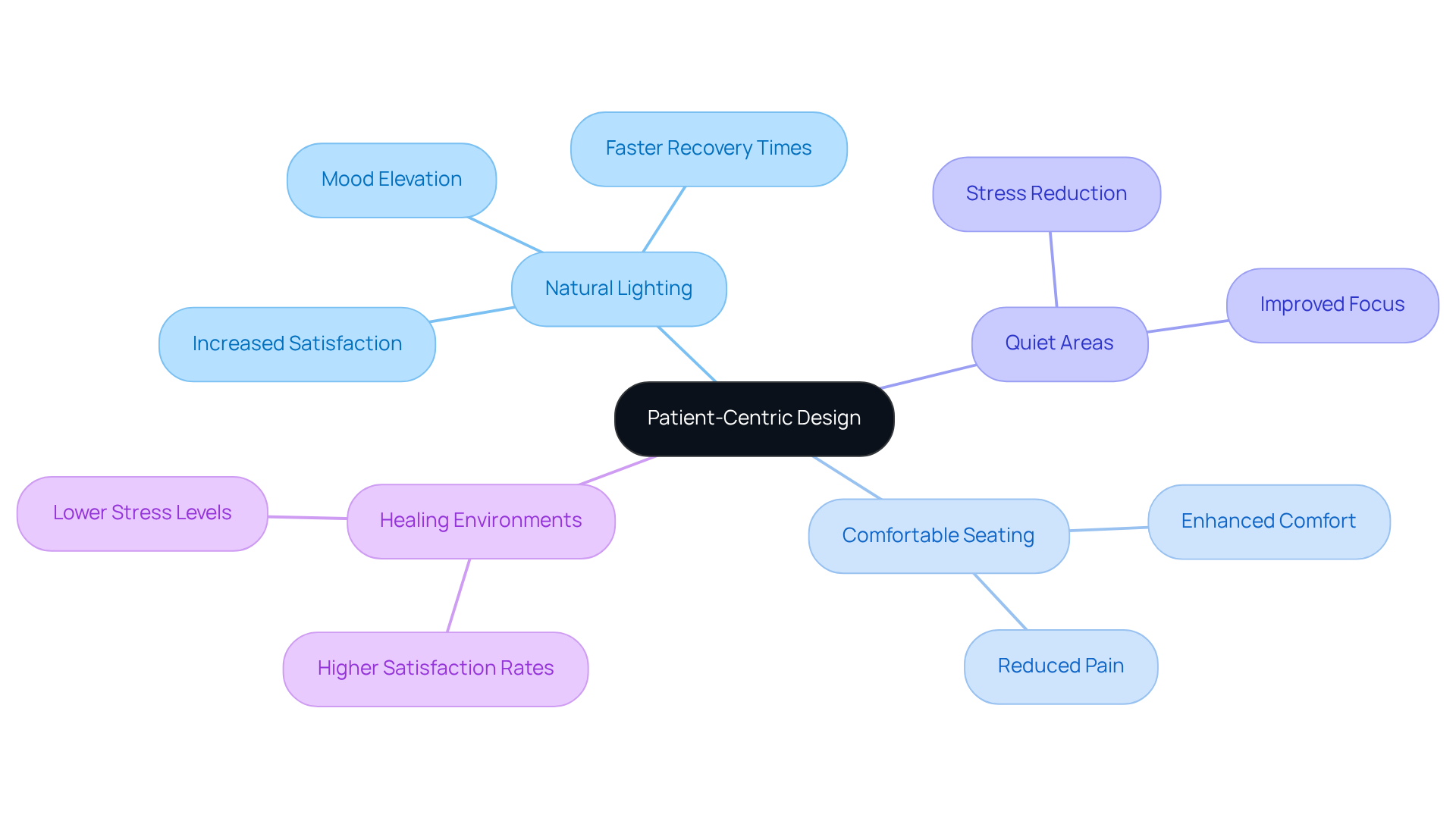
Staying Informed: Leveraging Insights for Continuous Improvement
Staying abreast of industry trends and client feedback is paramount for healthcare organizations committed to continuous improvement. By leveraging insights derived from data analytics, facilities can pinpoint areas that require enhancement and implement modifications that resonate with client expectations.
For example, regular patient satisfaction surveys yield invaluable feedback that can shape adjustments in service and amenities healthcare upgrades. This process ultimately culminates in enhanced patient experiences, reinforcing the vital connection between feedback and quality of care.
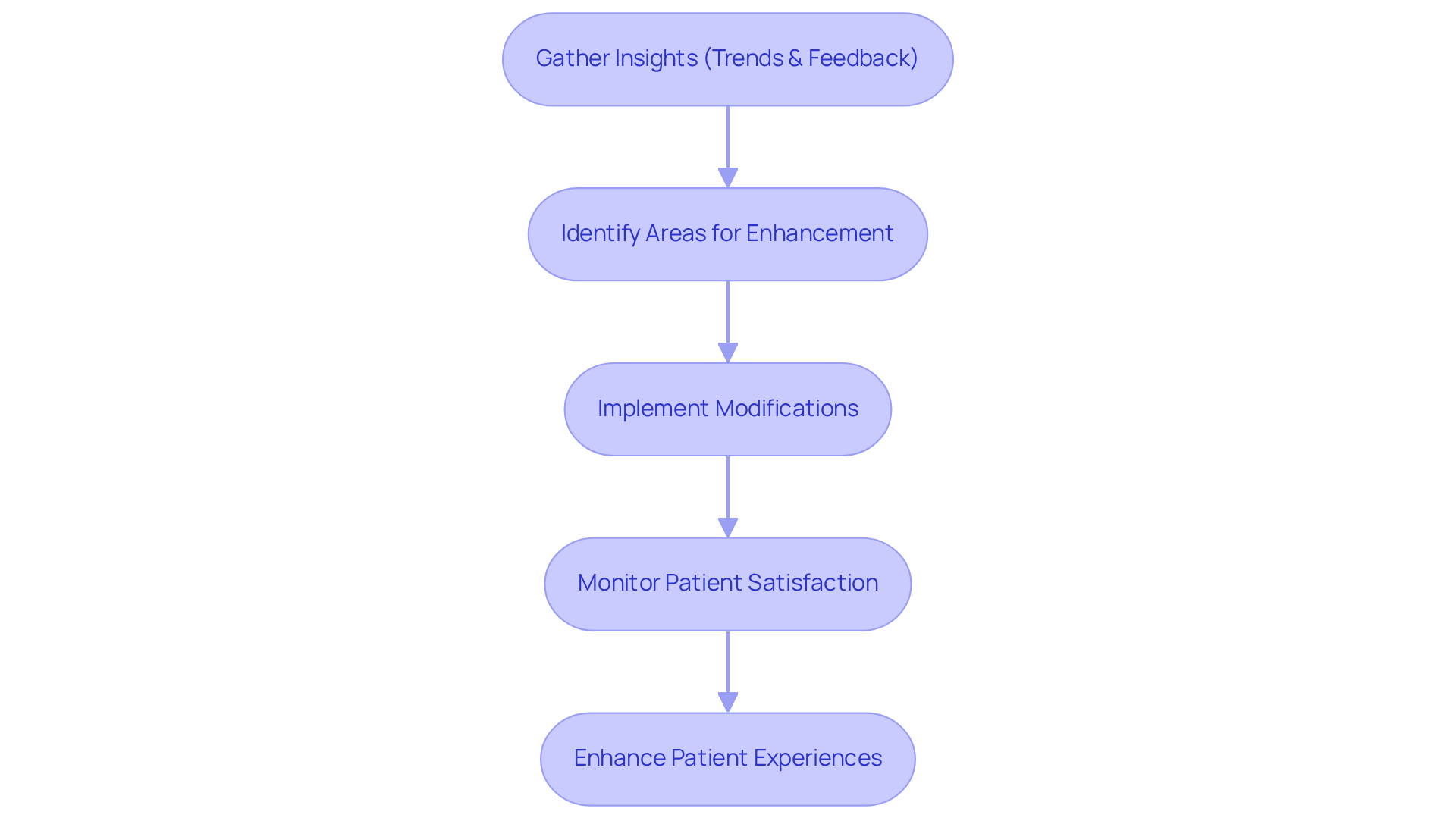
Conclusion
In the quest to attract and retain patients, healthcare facilities must prioritize essential amenities that enhance the patient experience. By integrating strategies such as same-day access, tailored services, and technology-driven solutions, medical centers can significantly improve satisfaction rates and foster loyalty among their clientele. The emphasis on quality amenities not only addresses immediate patient needs but also positions healthcare providers as trusted partners in wellness.
Key insights from the article highlight the importance of customized services that cater to diverse patient demographics. The role of technology in improving access and efficiency cannot be overstated, as it directly correlates with enhanced patient satisfaction. Furthermore, the financial benefits associated with innovative amenities present a compelling case for investment. Additionally, the necessity for comprehensive care models that encompass a wide range of services ensures that healthcare facilities can meet the evolving expectations of patients while maintaining operational effectiveness.
Ultimately, healthcare organizations are encouraged to embrace these trends and insights to create environments that prioritize patient comfort and satisfaction. By staying informed and adapting to the changing landscape, facilities can not only enhance their appeal but also contribute to improved health outcomes and community trust. Investing in the right amenities today will pave the way for a more patient-centric approach in the healthcare industry of tomorrow.




